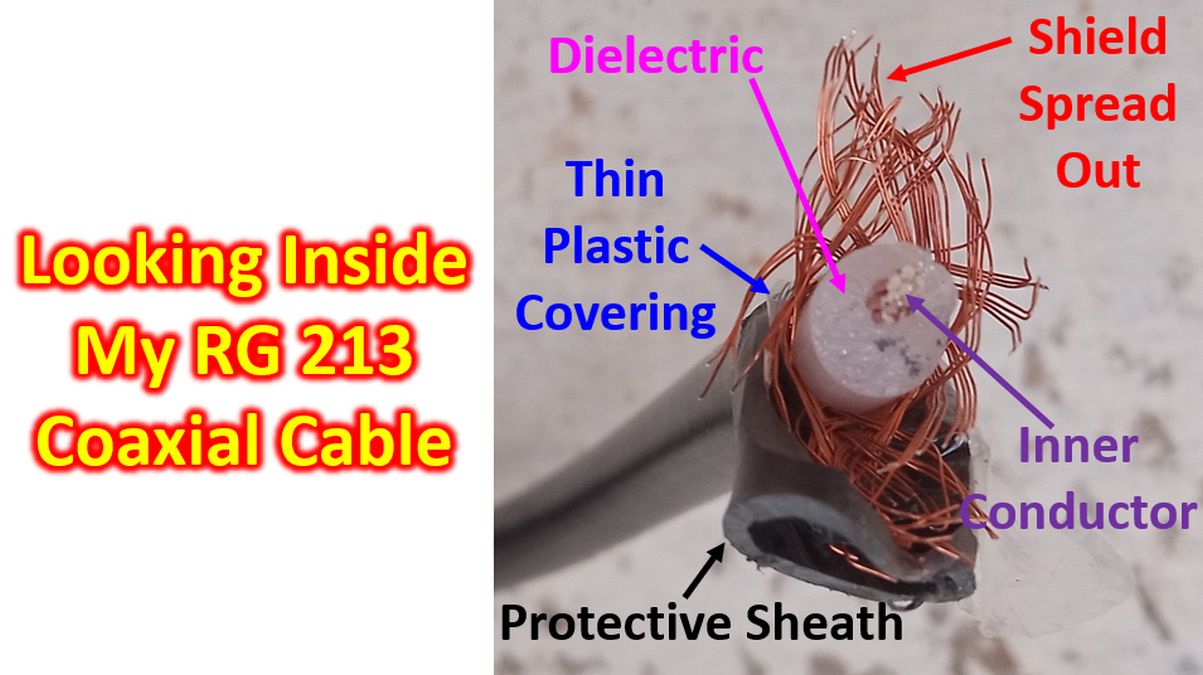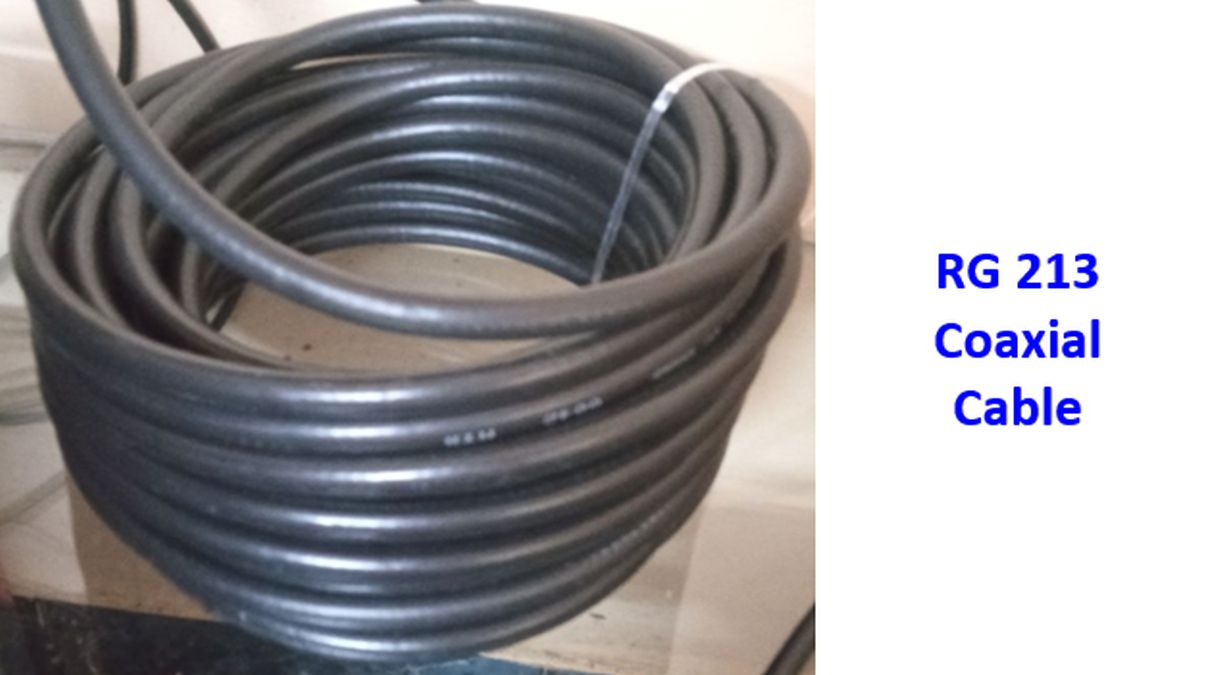Looking Inside My RG 213 Coaxial Cable
I had bought 30 m of RG 213 cable for my antenna homebrewing projects, with PL 259 connector pre-crimped at both ends. As I did not find the performance good when I had kept the surplus cable coiled inside my shack, I decided to cut it into two halves for the 20 m dipole antenna project. So I had a way of inspecting what the inside structure of the cable was. Outermost layer was the black protective sheath made of thick non conducting material. Inside it was a thin plastic layer covering the shield which had the colour of copper, but cut ends were glistening white. Similarly, the thick wires of the inner conductor also had outer colour of copper and cut ends were glistening white. In between the shield and inner conductor there was a thick layer of dielectric.

Though I did not scrape the outer covering of the shield and inner conductor to check whether it is copper clad aluminium, I almost sure it is. I did not want to waste a piece of the coax which I am using for my 20 m inverted V dipole antenna. Cost was also lesser compared to another difficult to get brand which others mentioned has full thickness copper shield and inner conductors and not copper clad aluminium. Currently I am using it for my 20 m antenna with fair results. I have been able to work an Indonesian station yesterday and today, at nearly 4000 km. Today I could work stations from Kolkatha, Mumbai, Hyderabad and Kohlapur comfortably on 20 m. Overall I am happy with this RG 213 cable with copper clad aluminium shield and inner conductor as it is cheaper and having fair performance.
